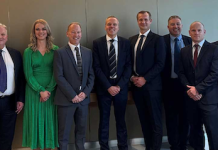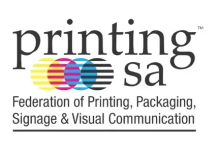According to Massivit 3D, in 2024, the integration of advanced materials and additive manufacturing techniques is not merely a trend but a fundamental shift towards smarter, faster and more environmentally responsible production.
Driven by the pursuit of innovation and efficiency, the marine sporting goods industry is embracing a wave of cutting-edge technologies that promise not only to enhance product quality but to completely transform the manufacturing landscape.
Massivit 3D explores how technological advancements are reshaping the industry, delivering custom solutions at unprecedented speeds and carving out new opportunities for businesses ready to navigate these changes.
Integration Of High-Performance Materials
Advancements in material science play a pivotal role in propelling the marine sporting goods industry forward.
Carbon fibre composites, for instance, are revolutionising the construction of boat hulls by significantly enhancing their rigidity and reducing overall weight. This leads to increased speed and fuel efficiency, showcasing how cutting-edge materials can transform traditional manufacturing processes.
Similarly, epoxy resins have made a significant impact on surfboard manufacturing. Offering better impact resistance and longevity compared to traditional materials, epoxy resins exemplify the industry’s shift towards more durable and high-performing products.
In personal watercraft, polymer-based seals, particularly when produced from hydrophobic materials, ensure enhanced sealing performance and durability, which is crucial for maintaining the integrity of engine compartments. Additionally, thermoplastic composites are favoured in kayak production for their ability to endure the rigours of water sports without compromising on weight or durability.
Finally, fibreglass reinforced plastic (FRP) has become a staple in marine propeller construction. Preferred for its corrosion resistance and mechanical strength, FRP highlights the industry’s move towards materials that offer long-lasting performance in harsh marine conditions.
Innovative Moulding and Fabrication Techniques
The marine sporting equipment industry adopts sophisticated moulding and fabrication techniques such as Resin Transfer Moulding (RTM) and Reaction Injection Moulding (RIM) to enhance precision and efficiency in large-scale production. These methods are pivotal in crafting intricate components that require exact tolerances and superior finishes. RTM and RIM offer distinct advantages over traditional manufacturing processes, including improved material consistency, reduced waste and faster production cycles, which in turn contribute to significant cost reductions.
A practical application of these technologies can be seen in the manufacturing of Rigid Inflatable Boats (RIBs), a popular category in the inflatable boat market. RTM is used to create the structural hull, known for its durability and lightweight properties. This process involves injecting resin into a closed mould pre-loaded with fibreglass, carbon fibre, or other composite fibres. The controlled injection ensures consistent resin flow and distribution, eliminating air pockets and potential weak points, which is crucial for the marine environment where strength and hydrodynamics are paramount.
Furthermore, RIM is employed to fabricate the boat’s smaller, more complex parts like consoles and seat bases, where the precise control over the injection parameters allows for robust yet lightweight components that contribute to the overall performance and fuel efficiency of the boats. These techniques not only enhance the product quality but also reduce the production time and costs associated with traditional open mould methods.
From the perspective of industry stakeholders, these technologies are reshaping production strategies by streamlining operations and minimising overhead costs associated with storage and material handling. Additionally, the ability to quickly adjust and scale production meets the dynamic demands of the market, enhancing service responsiveness and customer satisfaction.
MASSIVIT 3D
https://www.massivit3d.com/















